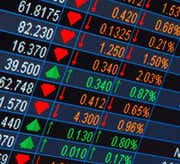The idea behind value investment strategies is simple: Find companies that are trading below their intrinsic value – stocks the market has undervalued. Investors who use this strategy believe the market overreacts to good and bad news, which triggers price fluctuations that don’t correspond to the company’s long-term fundamentals. When price temporarily declines, it creates an opportunity for the investor to profit – with the assumption that the market will eventually correct its error in valuation.
Contradictions
It should be noted that the theory behind value investing contradicts the well-known yet controversial efficient market hypothesis (EMH), which proposes that price always reflects all relevant information, and therefore reveals the intrinsic value of a company. EMH investors contend that it would be impossible for investors to buy undervalued stocks or sell stocks for inflated prices because stocks always trade at their fair value. Still, many successful investors, including Warren Buffett – the billionaire disciple of Benjamin Graham, the father of value investing and author of “The Intelligent Investor: The Definitive Book on Value Investing” – have proved that value investing can be a profitable method of stock picking.
Value, Not Junk
Value investors look for stocks with strong fundamentals – such as earnings, dividends, book value and cash flow – that happen to be selling at a discount, given their quality. To clarify, value investors don’t buy stocks just because they are “cheap”; the stocks must be selling at a bargain price relative to their fundamentals.
Here’s a simple example. Assume Company A and Company B have both been trading at about $25 per share for the past year. The share price for both companies suddenly drops to $10 per share. Does this mean that both stocks are selling at a bargain? Not necessarily. A closer look shows that Company A is backed by strong fundamentals and a well-respected management team. Company B, on the other hand, has been plagued by weak leadership and poor earnings. With this additional information, we can see that Company A may be an ideal stock for value investors because strong fundamentals indicate the price drop is likely temporary. Company B, however, is not suitable for value investors because its weak leadership and poor fundamentals show it’s probably not a bargain but rather headed to even lower share prices.
Buying the Company, not the Stock
It’s important to note that value investors view buying a stock as a means to become an owner of a company. To a value investor, profits are made by investing in quality companies, not by trading. Because their method relies on determining the worth of the underlying asset, value investors don’t pay attention to the external factors affecting a company, such as market volatility and daily price fluctuations. These external factors are not viewed as having any effect on the long-term value of the business and are essentially ignored in favor of the fundamentals.
What to Look For
You can find value stocks trading on any stock exchange (NYSE, Nasdaq, etc.) and in any sector – including financials, utilities, consumer discretionary, energy, healthcare, industrials, technology, telecom, real estate or materials. Some general guidelines you might include as part of your value investing strategy would be to look for companies with:
-
A share price that’s no more than two-thirds of intrinsic value. For example, if the intrinsic value is $30, the share price should be no more than $20.
-
A low price-earnings (P/E) ratio. The P/E ratio measures a company’s current share price relative to its per-share earnings. It’s calculated by dividing the market value per share by earnings per share. A good rule of thumb for value investors is to look for stocks with a P/E less than 40% of the stock’s highest P/E over the previous five years.
-
A low price-to-book (P/B) ratio. This metric compares a stock’s market value to its book value and is calculated by dividing the current closing price by the latest quarter’s book value per share. Typically, value investors seek companies with P/B ratios that fall below industry averages.
-
A low price/earnings to growth (PEG) ratio. This ratio is used to determine a stock’s value while considering the company’s earnings growth. It’s calculated by dividing a stock’s P/E ratio by the growth of its earnings for a specified time period. Value investors typically look for PEG ratios below one.
-
A low debt/equity (D/E) ratio. D/E measures a company’s financial leverage and is calculated by dividing its total liabilities by its stockholders’ equity. Like many metrics, D/E should only be used to compare companies within the same industry since a relatively high D/E might be normal in one industry, while a relatively low D/E might be common in another.
-
A dividend yield that’s at least two-thirds of the long-term AAA bond yield. For example, if the AAA bond yield is 3.61%, the company’s dividend yield should be at least 2.38%.
-
Earnings growth of at least 7%. Also there should be no more than two years of declining earnings of 5% or more, during the past 10 years.
Margin of Safety
Successful value investing depends on determining an accurate intrinsic value – something that can be tricky. Whether you figure out this number yourself or use an online resource such as MorningStar.com or Reuters, it’s a good idea to give yourself a margin of safety. For example, if you are confident that a company has an intrinsic value of $25 per share, you could use $21 per share in your analysis. That way, if the stock’s intrinsic value is lower that you estimated, the margin of safety would help keep you from paying too much for the stock. (For more, see What is the Intrinsic Value of a Stock?)
Stock-Picking Strategies: Growth Investing
-
 Investing
InvestingHow to Find Solid Buy-and-Hold Stocks
Find out how adding solid buy-and-hold stocks to your portfolio can lead to long-term profits with these fundamental and contrarian indicators. -
 Investing
InvestingStrategies of Legendary Value Investor
In this article, we'll look at some value investing techniques that legendary investors like Warren Buffett have used to identify undervalued companies. -
 Investing
InvestingHow to make a winning long-term stock pick
Discover the key elements of making a winning stock pick and a good long-term investment using fundamental and economic data analysis. -
 Investing
InvestingWarren Buffett and Berkshire's Productive Assets
Here are some methods to measure whether an investment will be "productive." -
 Investing
InvestingValue, Defensive or Cheap Stocks: What's the Difference?
Do not confuse value stocks with cheap stocks and defensive stocks. Follow a system for identifying value stocks by perusing their fundamentals. -
 Investing
InvestingWal-Mart's 5 Key Financial Ratios (WMT)
Identify the five key financial ratios that fundamental analysts use to evaluate Wal-Mart's (WMT) financial position to determine if it is a good buy. -
 Trading
TradingUnderstanding Option Pricing
Before venturing into the world of trading options, investors should have a good understanding of the factors determining the value of an option. -
 Investing
InvestingThe Difference Between Enterprise Value and Equity Value
Enterprise value calculates a business’s current value, while equity value offers a snapshot of that business’s current and potential future value.



